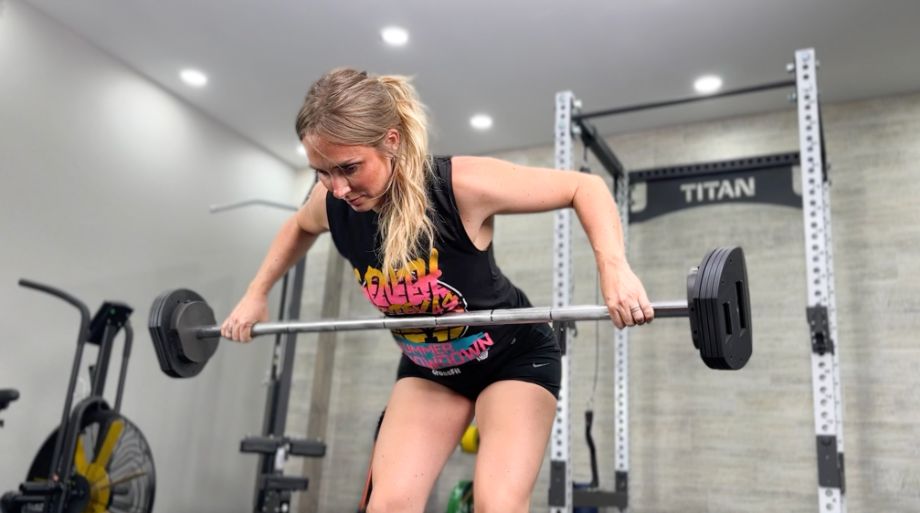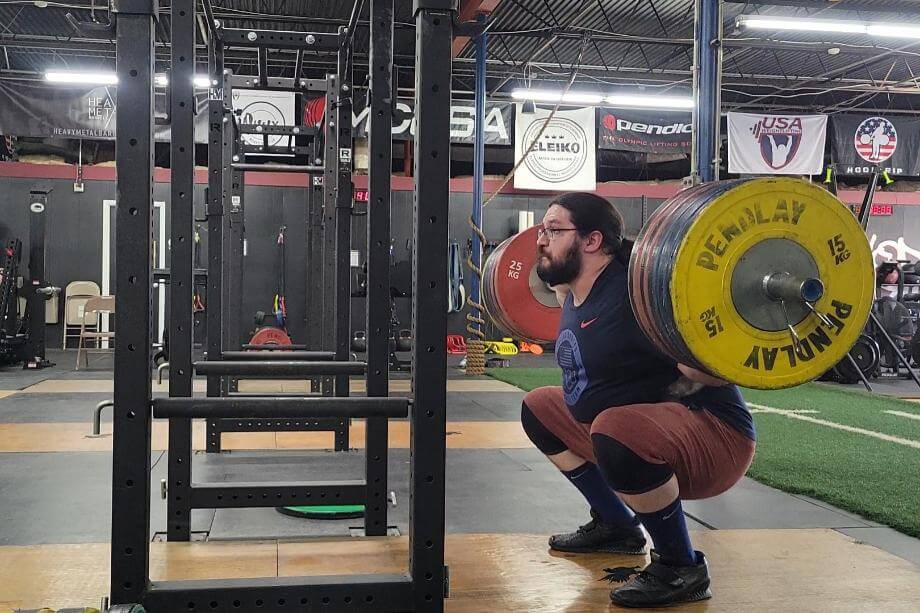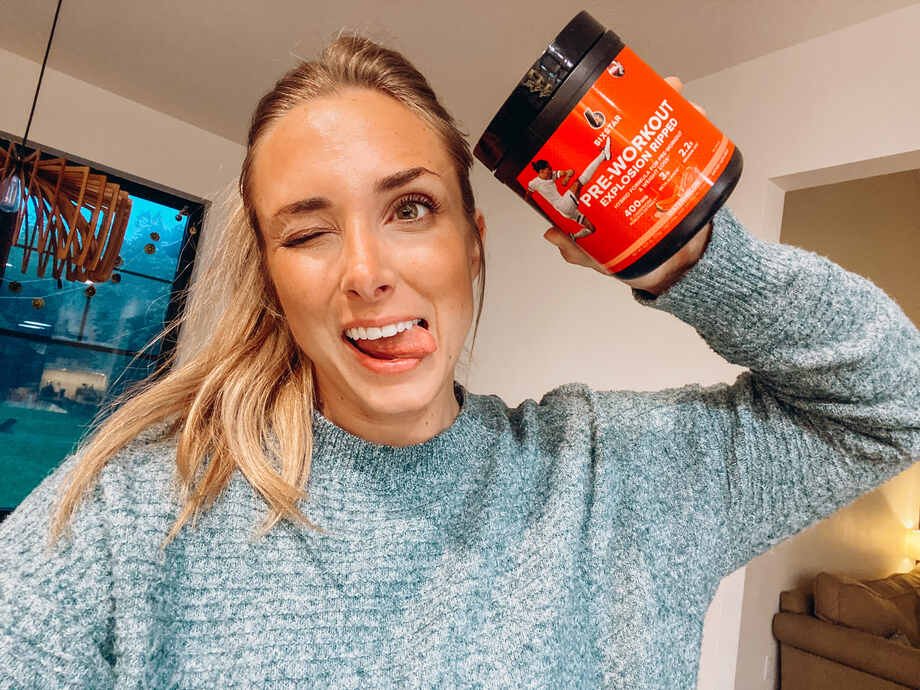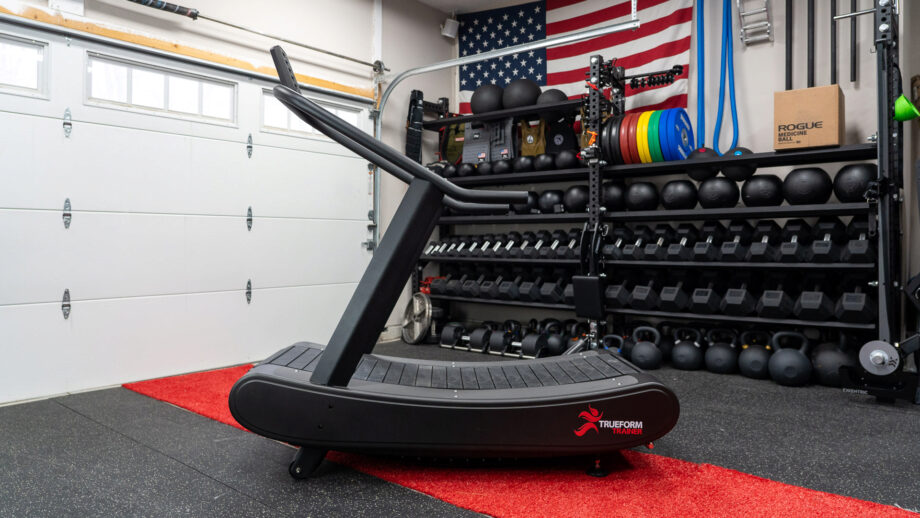Since I started training nearly 10 years ago, I’ve always strived for a strong back. I don’t know what it is about the back, but from seeing all of my bodybuilding idols growing up, a thick and symmetrical back has always impressed me.
RELATED: Best Back Exercises
Although the lats usually have the spotlight when it comes to the back, there’s another muscle group that matters, the rhomboids. The rhomboids help to move the upper limbs, as well as stabilize the scapula. There are also many benefits of targeting them, which include better posture, injury prevention, and potentially, the ability to lift heavier on other exercises.
For this article, I’ll go through exactly what the rhomboid muscles are, the benefits of doing rhomboid-strengthening exercises, and then explain, in detail, my 12 best rhomboid exercises for you to try.
Medical disclaimer: This article is intended for educational and informational purposes only. It is not intended as a substitute for medical advice. For health advice, contact a licensed healthcare provider.
What Are the Rhomboid Muscles, And What Do They Do?
The rhomboids consist of two different muscles; the rhomboid major and the rhomboid minor. They’re responsible for upper limb movement and stability of the shoulder girdle and scapula1.
Both the rhomboid major and minor muscles lie deep in the trapezius. The rhomboid minor is cylinder-shaped and inserts on the C7 and T1 vertebrae, and the rhomboid major is quadrangular-shaped and originates on the thoracic spine, from the second to the fifth vertebrae.
Although the rhomboids are overshadowed by the trapezius muscle, they’re extremely important. Any exercise that requires you to pull your shoulder blades back and together involves the rhomboids, and trust me, there are a lot of them. They’re also essential during throwing and swimming, making them an important consideration for the overhead athlete.
RELATED: This Trainer-Created Push-Pull Workout Will Beef Up Your Back And Shoulders
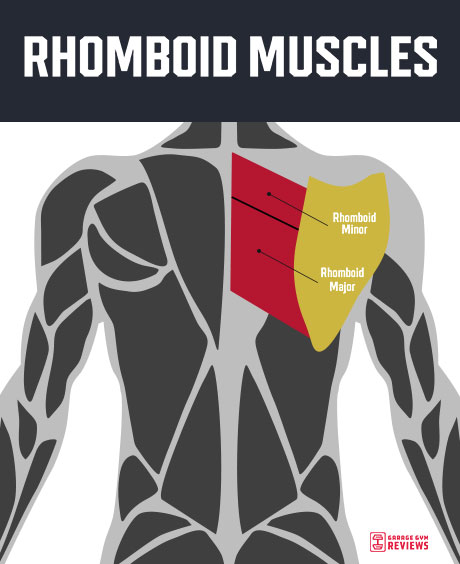
Benefits of Doing Rhomboid-Strengthening Exercises
Before we go through my favorite rhomboid exercises, let’s talk about the benefits of doing them in the first place. I consulted with Dr. Michael Masi, a doctor of physical therapy (DPT), personal trainer, and owner of Masi Fitness, to explain how to get the most from your rhomboid training.
Here are the three most important benefits of doing rhomboid-strengthening exercises:
Better Posture
Collectively, we’re spending more and more time at our desks or sitting down. “Prolonged sitting and driving may create unfavorable adaptations at the spine and shoulder girdle and may result in pain in the neck, shoulders, and back,” says Dr. Masi. Exercises that target the rhomboids effectively move us into positions that accentuate better posture and may help us improve our postural awareness2 and maybe even help manage symptoms caused by poor posture.
Injury Prevention
The rhomboid muscles are responsible for retracting the scapula, the bone required for many overhead activities and exercises. They also help control the arm when coming out of these positions, for instance, the follow-through after a throw. A dysfunction here could lead to injury of some of the other shoulder muscles via a shift in demand or irritation of other shoulder structures from unwanted compensatory motions.
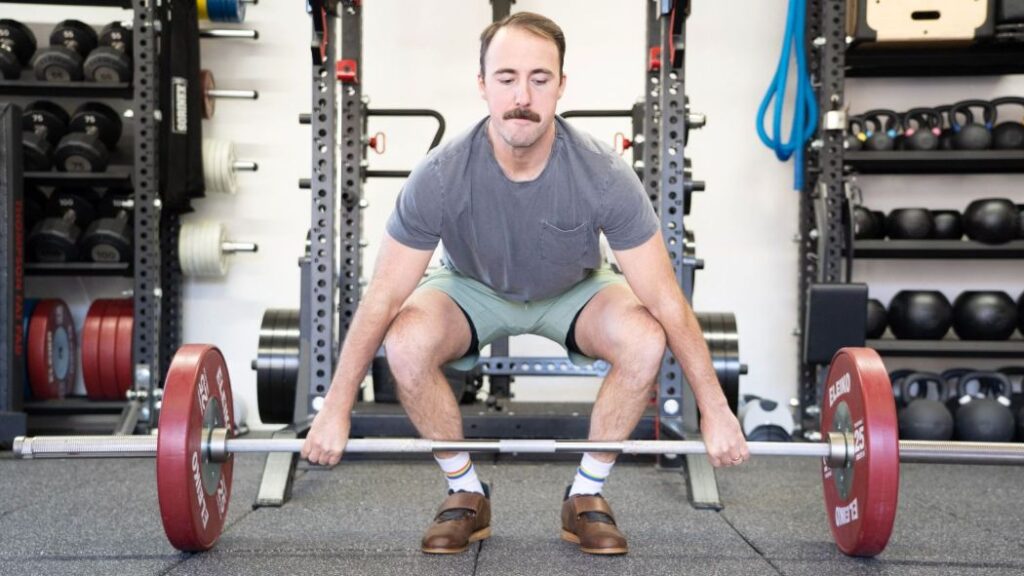
Stronger Lifts
The rhomboid muscles are responsible for scapular retraction and rotation, and they’re used in a range of exercises that you may perform in the gym or at home. This is especially true for pulling exercises, so stronger rhomboids may result in better performance when performing rows and pull-ups.
RELATED: What Muscles Do Pull-Ups Work?
Isolate and Strengthen With These Rhomboid Exercises
Now that you know what the rhomboid muscles are, as well as the benefits of rhomboid-strengthening exercises, here are my 12 favorite rhomboid exercises to add to your training program:
1. Bent-Over Barbell Row
Why it’s great: Not only do bent-over rows work the rhomboids, but they also hit the lats, traps, and rear delts. It’s a great exercise to help improve your grip strength, and because you’re positioned at a 45 to 90-degree angle, you’ll also activate your hamstrings and glutes during the movement.
RELATED: How To Do a Bent-Over Barbell Row
How to do it:
- Place your barbell on the ground and add the appropriate weights.
- Step underneath the bar (as you would with a deadlift) and take hold of it with a double overhand grip by hinging at the hips.
- With a straight back and your core engaged, deadlift the bar to your pelvic region.
- Drive your hips backward as far as they can go, and let the bar drop down so it’s near your knees to get into the starting position.
- Row the barbell to your abdominal region. During the row tuck your elbows enough so the row feels comfortable. The angle may change based on the width of your grip,
- Pause, then slowly lower the bar back down.
- Row for the desired number of repetitions.
RELATED: Best Olympic Barbells
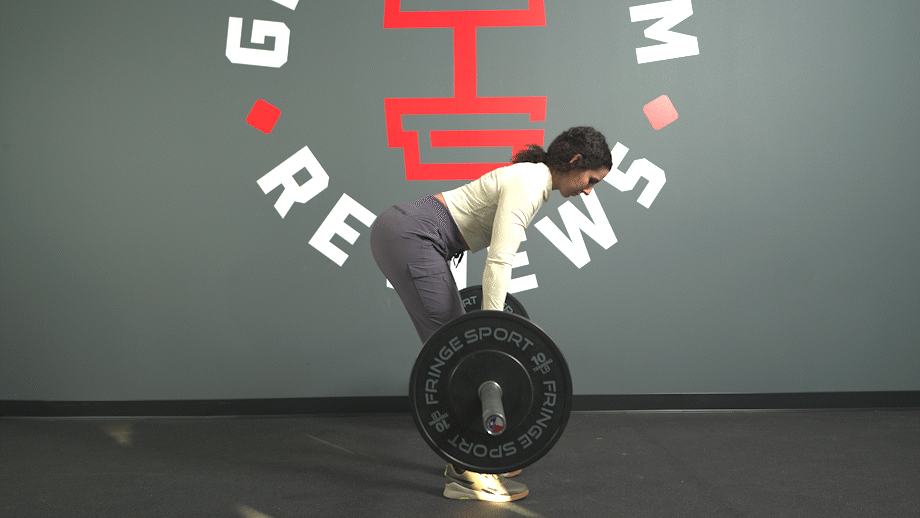
2. Rear-Delt Fly
Why it’s great: Rear-delt flyes work the rhomboids, posterior deltoids, lower back, and traps. “Regularly performing this exercise may help improve your posture and help create a resilience at the shoulder that is important for injury prevention in athletes,” says Dr. Masi.
You can do this exercise while standing (as described below), seated, with the best resistance bands, or using a cable machine.
How to do it:
- Stand up and take hold of a pair of dumbbells with a neutral grip, one in each hand.
- Position your feet so they’re shoulder-width apart, then hinge at the hips so your back is close to parallel with the ground with the dumbbells close to your knees.
- With a slight bend in your elbows, lift both arms to the sides until your hands are in line with your shoulders. Squeeze your shoulder blades together.
- In a controlled manner, bring the dumbbells back down allowing the shoulder blades to separate during the descent
- Try lighter weight here for a higher rep scheme
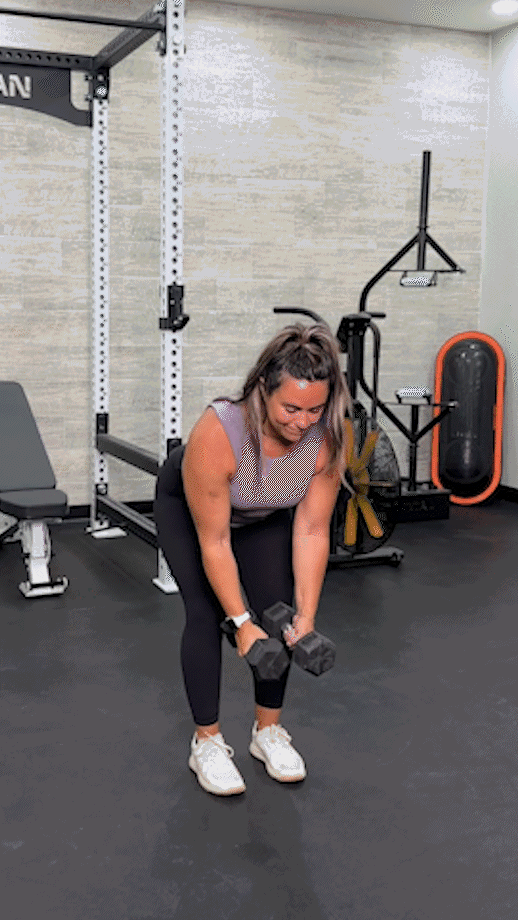
3. Meadows Row
Why it’s great: This back exercise is typically performed using a landmine press machine and is unilateral, so both sides of the body are worked equally. It’s great for beginners and activates the rhomboids, deltoids, trapezius muscles, and other muscle groups in the upper back.
How to do it:
- Stand perpendicular to the landmine press machine or attachment.
- Lean forward and take hold of the end of the bar with your right hand using an overhand grip.
- Place your left forearm on your left quad to increase stability.
- Row the barbell up while maintaining a neutral spine.
- Raise your arm toward the ceiling, ensuring that the rest of your body doesn’t move.
- When your arm is at the top of the movement, hold for a second or two, then lower the bar back down so it’s near the floor again.
- Repeat for repetitions, then switch over to the other side.
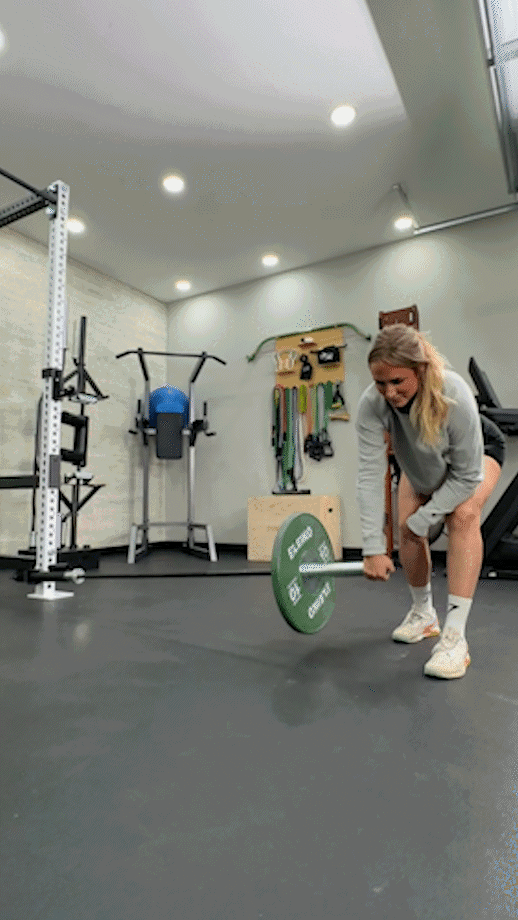
4. Face Pull
Why it’s great: “Face pulls may help to improve the health and mobility of your shoulder muscles and improve bad posture,” explains Dr. Masi. “If you’ve ever had a rotator cuff injury, they could make a significant difference when performed correctly.”
I’d recommend starting off with a lower weight and getting a full range of motion to really maximize the benefits. Although the pulley can be set lower, performing face pulls with the arms raised above the head is more effective for reducing upper trapezius tension2 while also strengthening the rhomboid muscle.
How to do it:
- Set a cable machine above head height, and attach a rope to it. Select your desired weight.
- With an overhand grip (palms facing the floor), take hold of the attachment.
- Take a few steps away from the cables until your arms are extended.
- Retract your shoulder blades, engage your core and glutes, then pull the rope toward your forehead.
- Pause, then reverse the motion so that your arms are extended once again.
- Continue for the desired number of repetitions.
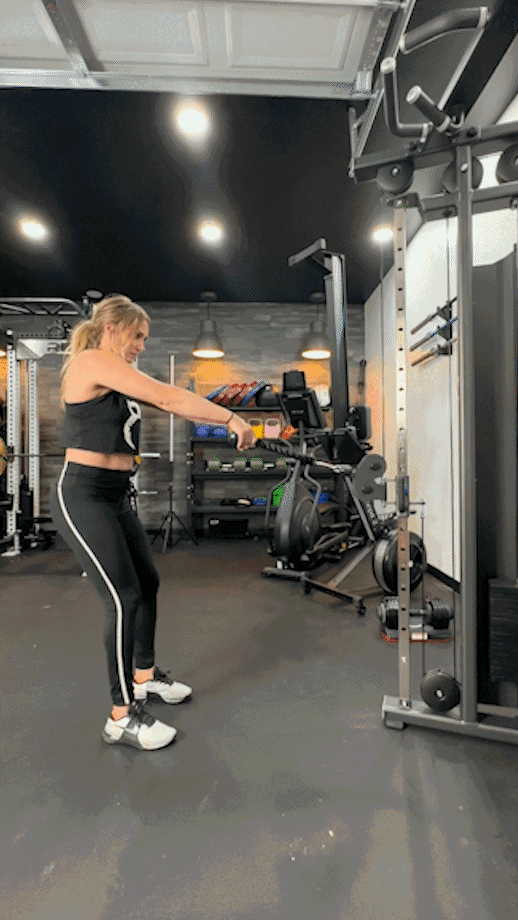
5. Lat Pulldown
Why it’s great: What’s a back workout without lat pulldowns?! Lat pulldowns hit nearly every back muscle, including the latissimus dorsi, rhomboids, teres major, trapezius, paraspinal, and posterior deltoids. They can help you get better at bodyweight workouts and exercises such as pull-ups and chin-ups too!
How to do it:
- Select the required weight, then hold the attachment with an overhand grip. Your hands should be positioned slightly wider than shoulder-width apart.
- Sit down on the seat, with your head neutral and chest up.
- Bring the attachment down to your upper chest region, focusing on sticking your chest up and squeezing the shoulder blades. Try this while leaning back as little as possible. .
- Slowly return the attachment to the top position.
- Keep pulling for reps.
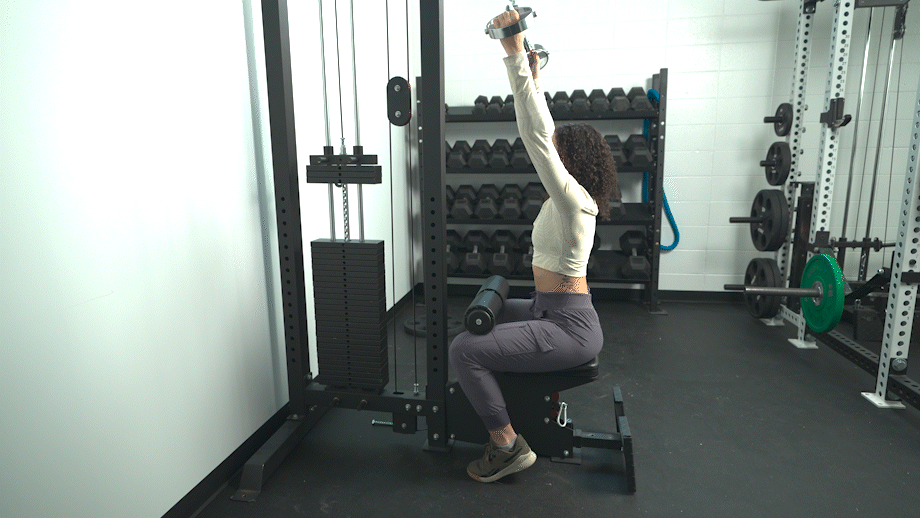
6. One-Arm Cable Row
Why it’s great: Single-arm or unilateral exercises are great because they can address muscular imbalances. I like this particular exercise because it’s easier on the rotator cuffs compared to other rhomboid exercises, ideal if you’re prone to shoulder pain or injury.
How to do it:
- Attach a handle to the pulley, then adjust the height of the cable machine so it’s at chest height. Position a flat bench close by.
- Grab the handle with your left hand, then step away from the cable machine so your arm is extended.
- Sit down on the bench, with your head neutral and back straight.
- While keeping your left elbow as close to your body as possible, row the attachment to the left side of your body.
- Pause, then return the handle to the starting position.
- Row for reps, then repeat on the right side.
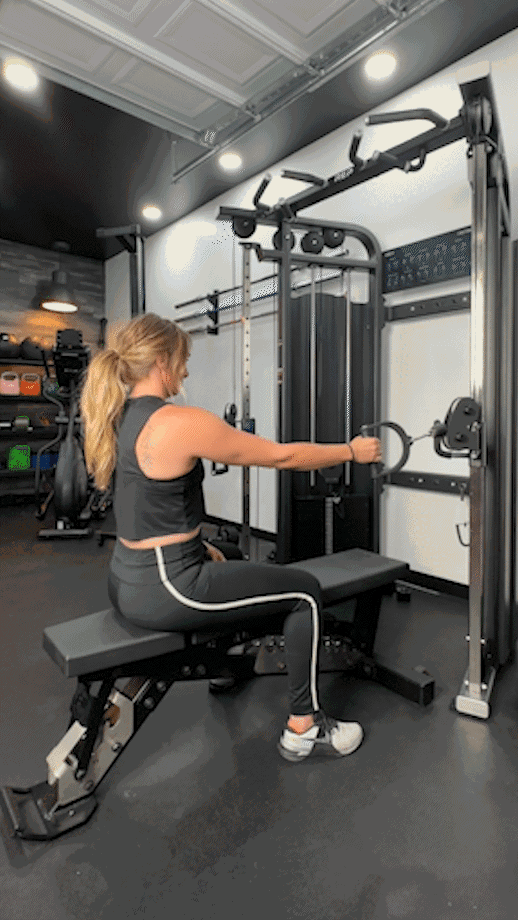
7. Single-Arm Dumbbell Row
Why it’s great: Single-arm dumbbell rows are a popular exercise in the weightlifting world and that’s because they seriously strengthen your upper back muscles. In particular, this exercise activates the rhomboids and lats, but there’s some bicep and core work involved too.
RELATED: How To Do One-Arm Dumbbell Rows
How to do it:
- Place your right knee and right hand on a weight bench or flat surface. Stabilize yourself by adding some of your body weight, so your torso is between a 60 and 90-degree angle.
- Your left foot should be on the floor and facing forward, with a slight bend in your left knee.
- Hold a dumbbell with your left hand, lifting it slightly off the ground. Let it hang there.
- Row the dumbbell toward your left hip, pausing when it can’t go any further. Steadily bring it back down.
- Repeat for the desired number of repetitions, then change to the other side.
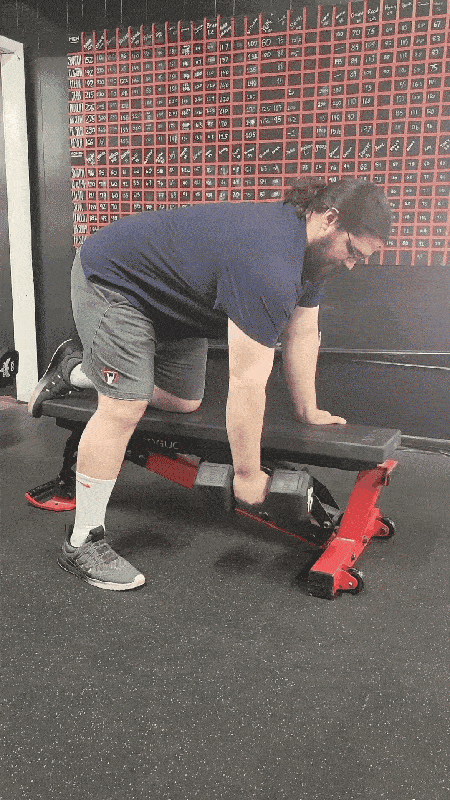
8. Seated Cable Row
Why it’s great: Cable machines, when compared with barbells or dumbbells, provide stability. This helps to reduce the risk of injury, so it’s a great exercise for beginners.
Dr. Masi says, “Scapular retraction and protraction is important with this exercise, so take it slow and control each repetition to make the most out of it.”
How to do it:
- Start off by choosing the right attachment. A V-grip is the most common, although a straight bar or EZ-bar attachment should work, too. Attach and choose the weight.
- Set the pulley to chest height, then sit down on the seat or the floor.
- Adjust your leg positioning so there’s a slight bend in your knees. Grab the attachment by leaning forward.
- Stick your chest up, tense your core, and row the attachment to your lower chest.
- Pause, then return the attachment in a controlled motion.
- Continue for reps.
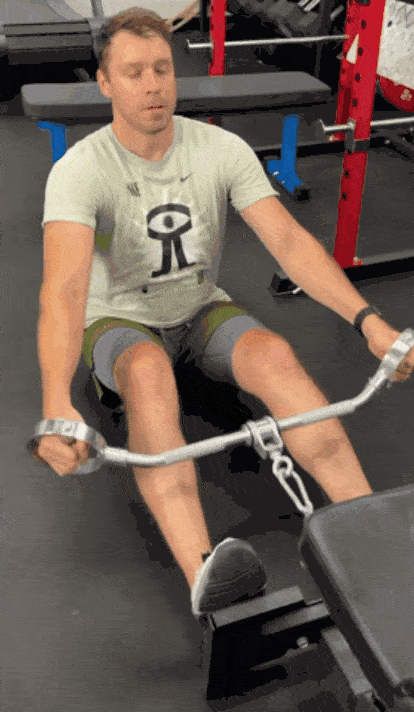
9. Inverted Row
Why it’s great: I love inverted rows because they work various muscle groups in your upper body, including the rhomboids, lats, deltoids, and traps. It’s a bodyweight exercise that can help to increase grip strength, improve poor posture, and get you stronger at exercises such as bent-over rows (which you saw above!) and bench presses.
How to do it:
- Attach J-hooks to a squat rack or power rack at approximately hip height (alternatively, you can use a Smith machine for this).
- Place a barbell on top, then sit down on the floor underneath the bar.
- Grab the bar with an overhand grip, then walk your feet out to the level of difficulty you require. The straighter your legs, the harder the exercise.
- While keeping your elbows tucked in as much as possible, engage your core, and pull your chest toward the bar.
- Pause at the top, then slowly lower yourself back down.
- Continue for reps.
RELATED: Power Rack Attachments
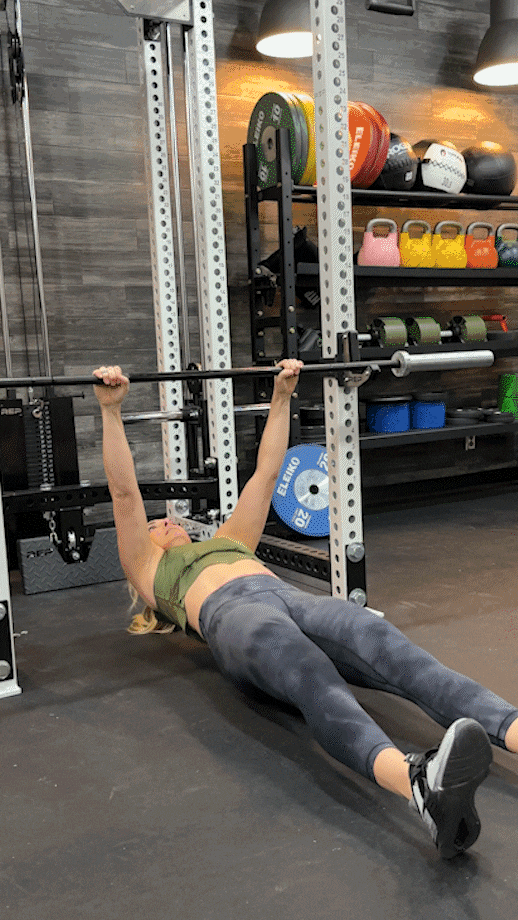
10. Resistance Band Pull-Aparts
Why it’s great: As long as you have a resistance band, you can do this exercise anywhere, and no other equipment is required. I like doing this as a warm-up before performing heavy dumbbell or barbell exercises for the rhomboids, but it’s an excellent standalone exercise, too.
“The often overlooked portion of this exercise is allowing the shoulder blades to separate when you return to your start position. Accentuating scapular protraction and retraction is imperative for targeting the rhomboids and middle trap muscles,” Dr. Masi says.
How to do it:
- Take hold of a resistance band with an overhand grip. Your hands should be positioned shoulder-width apart.
- Straighten your arms out in front of you with your shoulder blades separated and upright posture.
- Pull the band apart until it’s touching your body and your arms are out to the sides. Toward the end of the motion, squeeze your shoulder blades together.
- Hold, then reverse the movement in a controlled manner.
- Repeat for the desired number of reps.
RELATED: The Best Full-Body Resistance Band Workout Exercises
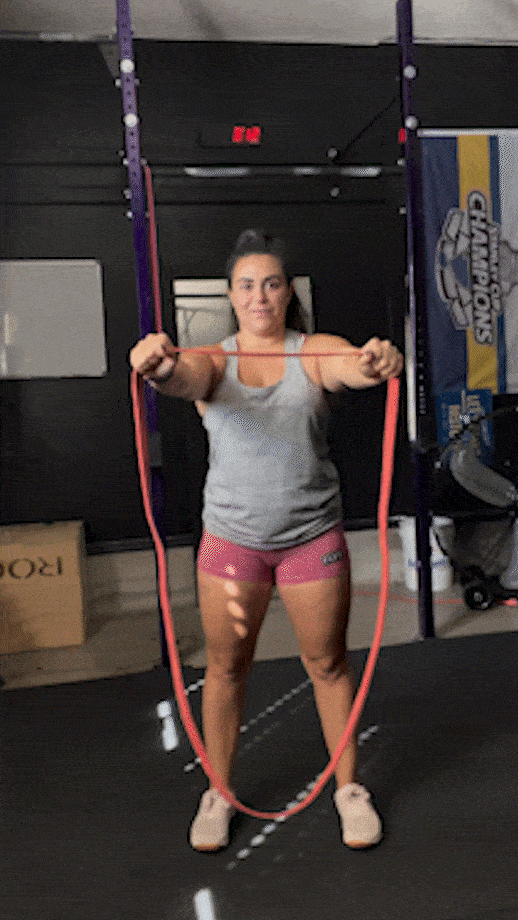
11. Landmine Row
Why it’s great: Compared to the bent-over barbell row, most people find they can lift heavier weights with a landmine row, so it can be a great exercise to build strength and size in your rhomboids, lats, biceps, rear delts, and traps. There are tons of variations, and you can change attachments to target your back in different ways.
How to do it:
- Add your preferred weight to the bar.
- Stand over the bar in a wide stance, facing away from the landmine attachment. You should be positioned in between the attachment and the weight plates, but closer to the plates.
- If you’re using an attachment (you don’t have to!), bend down and take hold of it. If not, take hold of the bar with both hands, one below and one on top.
- Stick your chest up and activate your core. Row the bar up to your lower chest region.
- Pause, then extend your arms by slowly lowering the barbell back down.
- Row for reps.
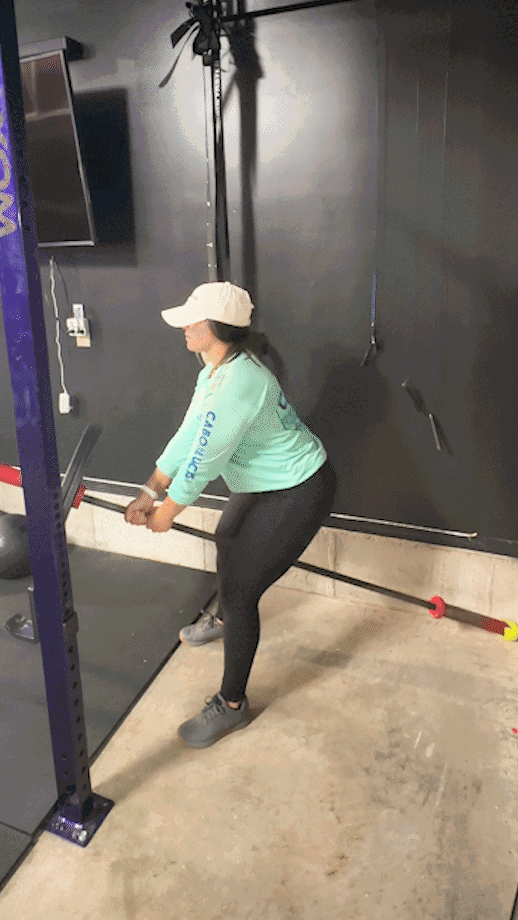
12. Pull-Ups
Why it’s great: Pull-ups are an elite back exercise and work most of the muscles in your upper and mid-back (the rhomboids included, of course!).
“To get the most out of your pull-ups, make sure you are straightening the arms all the way down into a dead hang position on the descent,” Dr. Masi explains. “The added stretch to the shoulder tissues will help create a bigger stimulus and signal more growth!”
How to do it:
- Step under the pull-up bar. Take hold of the handles with a wider-than-shoulder-width grip, with your palms facing away from you (double overhand grip).
- Get into the dead hang position by taking your feet off the sides.
- Contract your core, stick your chest up, and pull yourself up towards the ceiling.
- Stop and pause, then lower yourself back down, focusing on your lats throughout.
- Keep going for reps, then get back onto the sides and step off the pull-up bar.
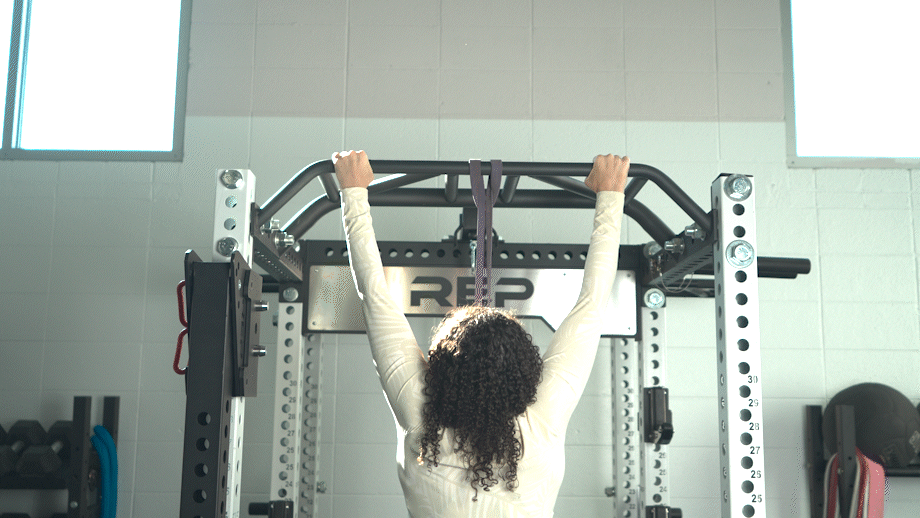
FAQs: Rhomboid Exercises
What exercise works the rhomboids?
To work the rhomboids, try some or all of the following exercises: bent-over barbell row, rear delt fly, meadows row, face pull, lat pulldown, one-arm cable row, single-arm dumbbell row, seated cable row, inverted row, resistance band pull-aparts, landmine row, and pull-up. They all target the rhomboids, so it’s worth trying them to see which you like and dislike.
How do you target rhomboids and lower traps?
If you’re looking to target the rhomboids and lower traps, tons of exercises can be effective. Examples of these include bent-over barbell row, face pull, single-arm dumbbell row, inverted row, and pull-up, but there are plenty more. Some target the rhomboids more, and some activate the lower traps more. Personally, I’m a big fan of lat pulldowns, inverted rows, landmine rows, and rear-delt flyes for the rhomboids and lower traps.
How do you isolate rhomboids?
It can be difficult to fully isolate your rhomboids because most rhomboid exercises also work other muscle groups in your back and shoulders, as well as the biceps and the core. However, exercises such as face pulls, one-arm cable row, and resistance band pull-aparts isolate the rhomboids more when compared to other exercises for the back.
References
- Farrell C, Kiel J. Anatomy, Back, Rhomboid Muscles. [Updated 2023 May 16]. In: StatPearls [Internet]. Treasure Island (FL): StatPearls Publishing; 2023 Jan-. Available from: https://www.ncbi.nlm.nih.gov/books/NBK534856/
- Yoo WG. Effects of pulling direction on upper trapezius and rhomboid muscle activity. J Phys Ther Sci. 2017 Jun;29(6):1043-1044. doi: 10.1589/jpts.29.1043. Epub 2017 Jun 7. PMID: 28626320; PMCID: PMC5468195.


